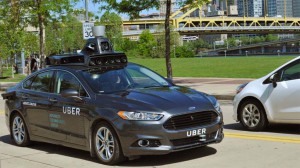
Uber scored a minor court victory as the judge asserted it was unlikely that Uber accessed any of Waymo's trade secrets.
Score one for Uber in the long-running courtroom drama between the ride-sharing company and Waymo, the autonomous vehicle spinoff of Google.
U.S. District Judge William Alsup said Waymo has failed to provide clear evidence that Uber conspired with engineer Anthony Levandowski to steal trade secrets from Waymo for its self-driving vehicle technology.
Waymo has asked the judge to slap Uber and Levandowski with injunctions preventing Uber from proceeding with its autonomous vehicle program, claiming that Uber was essentially using Waymo’s technology, especially its Lidar system.
Additionally, they asked the judge to bar Levandowski, who until recently headed up Uber’s autonomous program. He was replaced by Eric Meyhofer, who reports directly to CEO Travis Kalanick.
(Uber refutes Google’s stolen intellectual property charges. Click Here for the story.)
The move to step away was chronicled in an email from Levandowski to his employees that was revealed by Business Insider. He is working in other areas of the company, such as software and operations.
Alsup, who hasn’t ruled on the request yet, did acknowledge he’s convinced that Levandowski took more than 14,000 documents when he left Waymo to start his own company, Otto, which produced a self-driving semi truck. However, he remains unconvinced that Uber actually used any Waymo secrets to produce its technology.
(Click Here for more about the lawsuit.)
“I’ve given you lots of discovery, and so far you don’t have any smoking gun” showing that Uber knew Levandowski possessed any Waymo trade secrets, Alsup said, according to Reuters.
Waymo attorney Charles Verhoeven told the judge that Waymo believes the evidence exists; however, Levandowski invoked his fifth amendment right against self-incrimination during a deposition. Verhoeven also said Uber was improperly withholding thousands of documents on the grounds that they are confidential legal documents, Reuters reported.
The two sides have been going back and forth legally for much of the past 12 months. Self-driving vehicles are a critical component of Uber’s long-term plans. The company currently uses independent contractors as drivers.
(Sex harassment claim raises more problems for Uber. Click Here to get details.)
However, the company could cut its costs significantly if it could eliminate, or significantly reduce, its reliance on human drivers. The lawsuit with Waymo is just one of many issues Uber has been dealing with in recent months. The most prominent of which was a revelation by a former employee alleging she was sexually harassed while working there. Kalanick brought in former U.S. Attorney General Eric Holder to investigate the claims.

Let me get this straight. Uber dovetails with private car owners to assemble a huge fleet of defacto taxis at no cost to themselves… OK… it’s easily understood that this gives Uber a distinct advantage. Now… …Uber’s big plan is to do away with the driver. OK… so Uber and its’ investors somehow think that this is supposed to be smart… because…(?) …so let’s think a minute here… …doesn’t this also do away with Uber’s biggest advantage? i.e.: a cost free source of vehicles? Isn’t this Uber’s big advantage over Yellow Cab and others? Now let’s pretend that Uber actually gets driverless cars. Who’s cars are these? No owner is going to let Uber take her (or his) car after Uber has just eliminated his(or her’s) side (or sole) income. Now Uber is back to having to buy cars just like any other cab company. What am I missing here? Just because technology might be developed that might allow us to have driverless cars … … doesn’t necessarily mean that Uber as a corporation will see any real benefit. Where is a huge fleet of cost free cars supposed to come from? I’m probably missing something here… something obvious … but but what?
Steven,
You ask a fundamental and legitimate question. And the reality is that ride-sharing services will have to own or lease massive fleets, spending the money on the vehicles on their own, rather than counting on drivers to bring them. But the argument remains that this would still pull a large cost out of the equation.
Paul E.